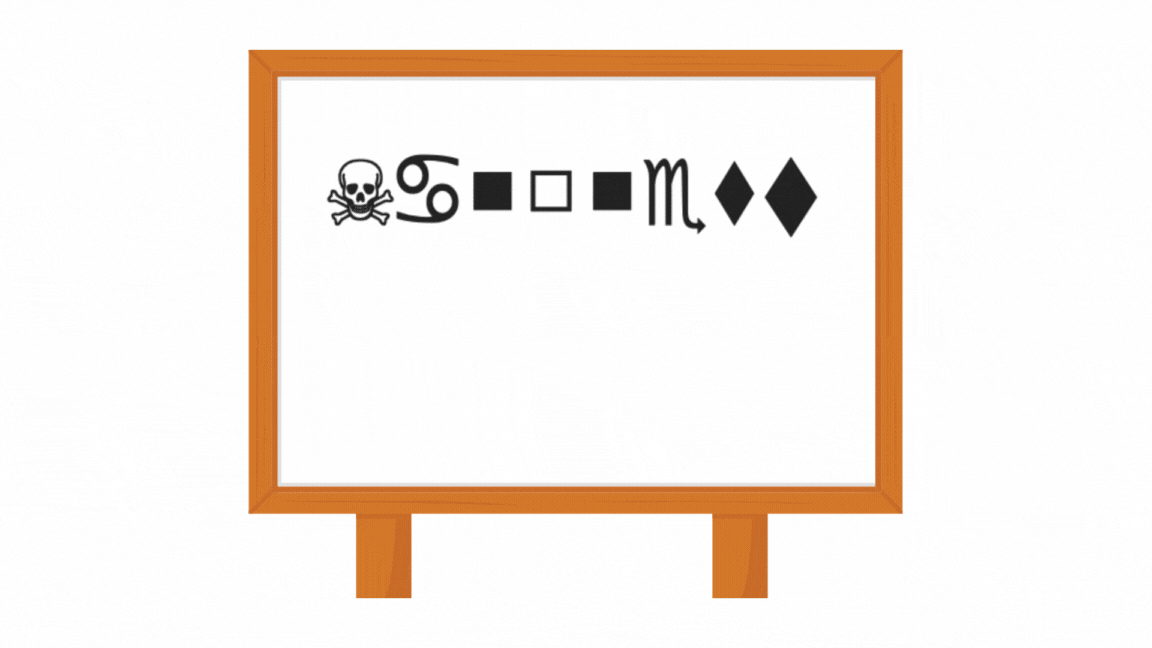
Download the expert's guide to document automation for RPA In Banking
In recent years, the banking industry has been under pressure to adopt intelligent automation and robotics technologies. The goal of RPA in banking is to speed up processes, improve accuracy and efficiency, and reduce costs.
Robotics in banking has seen a steady increase from handling cash to a more advanced role of automating sophisticated processes like underwriting.
With the advent of artificial intelligence (AI), Optical Character Recognition technology, and machine learning, banks are beginning to explore more challenging applications for robotic process automation in banking (RPA).
For example, now, RPA in banking is used to automatically identify and correct errors in complex financial documents. It can also aggregate data from multiple sources and provide recommendations for products and services. As the technology continues to evolve, likely, banks will increasingly rely on RPA to automate a wide range of tasks.
Let's take a look into how robotic process automation can revolutionize the banking sector for good.
What is Robotic process automation in banking?
Before we start, let's see what we mean by RPA in Banking.
RPA stands for Robotic Process Automation. Robotic process automation (RPA) is a software technology that makes it easier to create, deploy, and operate software robots that copy human activity and interact with digital systems and applications, like Nanonets.
The key focus of RPA in the banking industry is to streamline repetitive tasks. By automating routine banking processes, RPA enhances productivity for banks and financial institutions. This technology enables real-time customer engagement and harnesses the substantial advantages offered by robotic automation.
In the case of banking, robotic process automation in banking can automate manual banking processes by using rule-based automated workflows to complete banking tasks efficiently without human supervision.
Users can develop bots by analyzing human digital interactions using RPA automation. And then let your bots know what to do, and then leave them to it. Robotic process automation has likewise reduced the time it takes to complete a variety of back-office operations, which are used to clog bank personnel.
Banks have greatly reduced the need for human involvement by shifting many of these tedious, manual tasks to machines, which has had a significant impact on everything from performance and efficiency levels to staffing concerns.
With RPA in banking, you can use automated workflows to operate with any application or system the same way people do, except that they can perform 24/7, without interruption, with precision and reliability.
Read more: Get started with Banking Automation.
What is the potential of RPA in Banking?
Banks are turning to automation to improve operational efficiency and speed up banking processes. Banking RPA can be used in several ways. Let's look at some processes that can be automated with RPA workflows.
Customer Service
Customers have become impatient. They want their queries resolved quickly and efficiently.
17% of customers can tolerate wait times of less than 3 minutes, and 22% of banking customers want their wait time between 3-7 minutes!
Banks receive various requests each day, and the most common is account information. Banks struggle to reply to queries with a delay time of fewer than 24 hours.
RPA in banking can automate such routine activities to respond to queries in real time and reduce response times to seconds, freeing up human resources for essential work.
Bank RPA may also help with questions that need decision-making, thanks to artificial intelligence. Chatbot Automation employs NLP to enable bots to converse naturally with customers and reply as if they were humans.
Read more: RPA in Customer Service
Compliance
Banking is heavily regulated due to its importance to the economy and must comply with a multitude of rules and regulations. RPA in banking improves productivity by allowing for 24/7 availability and high accuracy, thereby improving the quality of compliance procedures.
See how Nanonets adhere to regulatory compliances.
Accounts Payable
Accounts payable in the banking sector is a simple but monotonous process. The first step in this process is to gather vendor information and validate it, after which the transaction will be processed. This does not require any human intelligence and is a completely rule-based process, making it ideal for bank RPA.
There are several possibilities to automate the RPA in the banking process using optical character recognition (OCR) solutions. The OCR may read the vendor information from the digital copy physical form and pass it on to the RPA bank system.
Robotic process automation in banking evaluates the data with the system to ensure accuracy, and it will make the payment. RPA in banking will notify an executive if any mistake is made so that they can correct it.
Read more: Nanonets & Quickbooks Account Payable Automation
Credit Card Processing
The systematic verification and approval of credit cards used to take weeks. Customers were dissatisfied with the long waiting period, which was costly for banks. However, banks may now process the application in hours with the help of RPA in banking.
Banking RPA can interact with many systems at the same time to conduct KYC verification, online ID verification, background checks, and credit checks and make a decision based on criteria like approval or rejection of applications.
Mortgage Loan
In the United States, it takes approx. two months to process a mortgage loan.
A mortgage loan is subjected to several evaluations, including credit checks, repayment history, employment verification, and house inspection.
A small error could slow down the process. RPA in banking can speed up and clear the bottleneck to reduce processing time to minutes rather than days, as criteria and checks govern the procedure.
Fraud Detection
One of the most significant worries for banks is fraud due to the advent of digital systems. It's tough for banks to keep track of all transactions to identify fake bank statements. Banking RPA can monitor transactions and identify possible fraud patterns in real time, reducing the lag in response. Banking automation may prevent fraud by blocking accounts and halting transactions in some situations.
Read more: Identify and Reduce Vendor Fraud
KYC Process
For every customer, a necessary process for banks is Know Your Customer (KYC). To successfully execute this method, it is necessary to have 1,000+ FTEs performing critical analyses on the customers.
Although banks have begun using robotic process automation in banking to verify consumer data because of the savings in personnel time and costs, they have started utilizing it to validate client data. Banks no longer have to worry about FTEs or completing the process with fewer mistakes due to higher accuracy.
Read more: How to automate KYC verification using deep learning?
General Ledger
The general ledger is a record of all transactions in an organization, and it must be kept up to date for the financial statements to be made. Financial statements are the public documents used by the general public, stakeholders, and media.
Errors in the report can significantly impact a bank's reputation since there is so much information in the statement.
To make a claim, the bank must track and reconcile data from various legacy systems because they cannot communicate with one another, verify it, or ensure that the general ledger is accurate.
With this much data from multiple sources, there will inevitably be mistakes. So RPA is here for the banks' rescue. Even if the information in the systems isn't in the same format, banking RPA may aggregate data from several legacy systems to present it in the desired form. This reduces a lot of data processing and time.
Report Automation
Like other public businesses, banks have to produce reports and submit them to their investors to show their performance. There is no way for the bank to make a mistake considering the document's significance.
Banking RPA technologies deliver data in various forms, but owing to their ability to auto-fill the available report type to produce reports that are free of mistakes and with minimal effort, they can generate reports.
Account Closure Process
It's normal to receive requests for account closures when handling so many clients. There might be several causes for the closures, including when a client has failed to supply the necessary papers.
Using Robotic Process Automation, it's simple to keep track of such accounts, send automated notifications, and schedule calls for document submissions. Banking RPA can also aid banks in unusual circumstances, such as when clients fail to submit KYC information.
What are the challenges faced by the banking industry?
Increasing regulation and compliance costs
The banking industry is subject to increasing regulation, which has led to higher compliance costs. In response to the global financial crisis, banks have been subjected to new regulations, such as the Dodd-Frank Act in the US and Basel III in Europe. These regulations are designed to make the banking system more stable and prevent another financial crisis. However, they have also increased the costs of doing business for banks, as they must now comply with a greater number of rules and regulations.
Low-interest rates
Interest rates have been at historic lows in recent years, which has affected the profitability of banks. When interest rates are low, it becomes more difficult for banks to earn a profit from their lending activities. This has led to some banks cutting back on their lending activities in order to preserve capital.
Slow economic growth
Slow economic growth has also been a challenge for the banking industry. When the economy is growing slowly, there is less demand for loans and other banking products and services. This can lead to lower profits and even losses for banks.
Technology disruptions
The rise of new technology has also been a challenge for the banking industry. New technologies, such as mobile banking and peer-to-peer lending, have created new competitors for traditional banks. These new entrants are often able to offer customers lower prices and more convenient services than traditional banks. As a result, traditional banks are losing market share to these new competitors.
Want to scrape data from PDF documents, convert PDF to XML or automate table extraction? Check out Nanonets' PDF scraper or PDF parser to convert PDFs to database entries!
Benefits Of RPA In Banking:
Robotic process automation is being utilized in many industries.
According to Gartner, 80% of leaders in the financial sector are using an RPA for various purposes.
Here are some of the leading benefits of RPA in banking:
Scalability
The fact that robots are highly scalable allows you to manage big volumes during peak business hours by adding more bots and reacting to any scenario in record time.
Furthermore, RPA in banking implementation allows banks to direct more attention to innovative ways to develop their business by freeing workers from time-consuming activities.
Increased operational efficiency
Banks and financial institutions may make their operations much quicker, more productive, and more efficient when they have correctly configured RPA.
Cost-effectiveness
The banking industry, like any other sector, is concerned with cost-cutting. Banks and financial organizations may reduce processing time and expense by 25% to 50% by using Banking RPA software.
Interested? Try Nanonets for free. Or set up a call with our automation experts to see how you can improve your processes.
Risk and compliance reporting
RPA in banking helps create comprehensive audit trails for all activities, reducing business risk and ensuring high process compliance.
Availability
Robots are available 24 hours a day, seven days a week, to complete their chores, whether you want to decrease manual mistakes or achieve high accuracy at a low cost. As a result, they are reiterating the all-pervasive presence.
Zero infrastructure cost
RPA's flexibility is one of its advantages in the financial services industry. Because of its UI automation capabilities, RPA in banking does not necessitate any significant infrastructure modifications. Cloud-based RPA in financial services reduces hardware and maintenance expenditures even more.
Faster implementation
It's simple to set up and keep running automated workflows with banking RPA technologies, which offer a drag-and-drop method for automating banking procedures.
Business growth with legacy data
Banks and financial services companies are employing legacy and new data to bridge the gap between procedures with RPA in financial services implementation. This form of commencement and availability of critical information in one system allows banks to generate more rapid and higher-quality reports for company expansion.
Want to automate repetitive manual tasks? Check our Nanonets workflow-based document processing software. Extract data from invoices, identity cards, or any document on autopilot!
Use Cases Of RPA In Banking
Examples of Robotic Process Automation (RPA) in Banking are:
Contact Center Optimization
Many banks are experiencing a high volume of inbound calls during the COVID-19 catastrophe since many physical interactions with clients aren't running or are operating at a fraction of their capacity.
Automated technologies, such as bank Robotic Process Automation (RPA) tools and chatbots, can assist with this traffic. The Bots can handle simple queries such as account statements and transactions, whereas complex human decision-making questions are passed on to appropriate knowledge workers.
Trade Finance Operations
Banks may use RPA solutions to expand their trade finance activities and build their presence in the financial supply chain.
Customer Onboarding
Banks' onboarding procedures are extremely difficult, owing to the numerous identity documents that must be manually validated. An essential component of Know-Your-Customer (KYC) is document verifications, which are time-consuming and require significant operational work.
KYC content is usually a combination of RPA, computer vision (CV), and intelligent optical character recognition (OCR) to extract information and authenticate identification supplied by the client in the application form. The automation helps eliminate manual mistakes and saves significant time and effort for the back-office operations team.
Anti-money Laundering (AML)
The automation of the complete AML investigation process is one of the most prominent examples of RPA in banking.
The procedure is highly hands-on and takes anywhere from 30 to 40 minutes to investigate a single case, depending on the complexity and accessibility of data in numerous systems.
With RPA, you may execute these common and rule-based activities quickly, resulting in a more than 60% decrease in process turnaround time.
Bank Reconciliation Process
The bank reconciliation procedure is time-intensive, demanding knowledge workers to manually track down and reconcile many financial transactions from numerous banks.
RPA in banking can turn manual operations into automated ones by programming bots to apply various rules-based automation, such as comparing each payment entry with bank data and other records.
The records are reconciled if the entries are matched. In any disagreements, the Bots might send the documents for further evaluation.
Loan Application Processing
Banks and financial companies are interested in automating the loan application procedure. Documents for loan and appraisal requests are generally delivered via email in a bundled PDF format.
Manual activities that include extracting data from applications and ensuring its correct matching against a variety of identity papers and creditworthiness evaluation are some of the most important tasks. Banking RPA bots with artificial intelligence (AI) capabilities are used to extract data intelligently and automate various repetitive tasks.
Bank Guarantee Closures
This is a highly relevant RPA in the banking use case for many banks, typically quite specific. A bank guarantee closure process requires a team of expert knowledge workers to manually convert data from various disconnected legacy systems and identify bank guarantees that need to be terminated.
Manually generating and distributing notice letters, as well as executing closure, is time-consuming. There are several manual checks at each stage, which reduces overall productivity. Bank RPA is used to automate the whole procedure successfully.
Case Studies Of RPA In Banking:
The following case studies, which all highlight how U.S. and European banks are implementing intelligent RPA, can help you gain a deeper understanding of how it is being used in the banking industry.
Case Study 1: BNY Mellon
For clearing trades and boosting accuracy.
Bank has $371.8 billion in assets and more than 30 professionals with RPA experience.
BNY Mellon is one of the banking industry's most vocal advocates for robotic process automation. In 2016, the bank started using banking robotic process automation; by 2017, it had 250 robots in production.
BNY bots are being used to automate the trade-settlement procedure at other firms.
Trades must be cleared, order research carried out, and differences resolved. While human employees take five to ten minutes to resolve a failed trade, the BNY bot completes the task in a quarter of a second.
The following is a rundown of some other robotics in banking advantages cited by the bank: transaction processing speeds have improved by 88 percent, with 99 percent accuracy, across five systems, and account closures were validated at an exceptional accuracy of 100%.
BNY Mellon's deployment of bank RPA bots has allowed financial workers to devote more time to operational quality control and outliers, according to the bank's 2017 annual report:
We've been enhancing our processes and employing automation tools, like robots, for routine processing; these technologies result in greater efficiency, lower costs, quicker speed, and accuracy. This benefits us as well as our clients. And as we continue to invest in our technology platform and capabilities to advance and improve our client service, our efforts proceed.
Case Study 2: BB&T Corporation
Big investments in fintech and robotics are a priority.
Bank has $221 billion in assets operations across 15 states and Washington, D.C., with 2,200 retail branch locations and seven employees with robotic process automation expertise.
The North Carolina-based bank has expressed interest in intelligent automation, such as bank RPA, to improve the efficiency of its operations. This is evidenced by the bank's $50 million investment in fintech firms, demonstrating that company services are a priority.
According to BB&T's 2017 annual report, the bank has "robotics" among eight initiatives to boost profitability.
Case Study 3: Suntrust Bank
For Speeding training and the slashing errors
Having $205.96 billion in total assets and 21 professionals with RPA experience.
SunTrust Bank is a bank headquartered in Atlanta that serves the Southeast and Mid-Atlantic areas. We can see evidence of the bank's use of robotic process automation in a November 2016 presentation:
According to reports at the time, the bank established a group within its IT department to assist with the introduction of banking RPA technology. In payment-operations areas such as consumer bank cards, wires, and ACH, SunTrust has implemented Pega Robotic Desktop Automation.
The bank reported that transaction speed increased by 3.8 times, training time was shortened by four times, and a staggering 65 percent reduced error rate due to robotics.
Suntrust aims to incorporate RPA technology into various other areas, including wholesale lending, mortgages, treasury developments, and image services. The bank had already completed 19 projects at the presentation, with seven more in development.
The 2017 annual report from SunTrust Bank states that the bank is "making significant investments in various types of automation," including robotics, to improve effectiveness and provide staff more time to focus on higher value-added activities.
Want to use robotic process automation? Check out Nanonets workflow-based document processing software. No code. No hassle platform.
Nanonets For RPA In Banking:
NanoNets is a machine-learning platform that makes it possible for users to collect data from invoices, receipts, and other papers without any templates.
Banks can use Nanonets to automate various tasks. This software is designed to be easily integrated into existing systems and requires no coding skills.
Nanonets offer several features that are particularly well-suited for the banking industry, including:
● The ability to automate tasks across a variety of banking platforms, including loans, deposits, and customer service
● A wide range of pre-built workflows can be used to automate common banking tasks, such as opening accounts and transferring money.
● The ability to easily create custom AI models and workflows to automate any task without the need for coding skills
● Integration with existing systems, such as CRM and ERP platforms
● A user-friendly interface that requires no training to use
How To Select The Best RPA In Banking?
We must keep in mind the goals and demands of any bank when choosing the best RPA. As a result, the following are some necessary criteria for selecting the appropriate RPA for your bank:
Ease of Implementation
One of the most appealing aspects of RPA technology is its simplicity of use, non-intrusive nature, and compatibility with legacy systems. As a result, it's critical to verify the integration capability with current systems before purchase to avoid downtime and facilitate a smooth transition after adopting automation technology.
Ease of use
The RPA in banking should be chosen to be simple to use, flexible enough to allow for basic automation processes, need less training, user-friendly, and can be controlled with ease. Analysts who lack technical knowledge should also take into account the selection.
Speed
One of the most important features is the speed of processes. The primary purpose of adopting RPA is to improve the process's pace and effectiveness. As a result, we should examine whether the RPA improves performance in terms of fast task completion, rapid mapping procedures, etc.
Technical Features
The bank should also focus on certain technical elements, including scraping screens, scalability, cognitive capabilities, etc. The bank should examine the tool's security features since it handles private data.
Given that all banks have sensitive information on their servers, no matter how big or small, security is an essential concern. The bank must ensure both the level of security it wants and the extent to which they are prepared before adopting RPA technology. Otherwise, external malicious attacks may cause the system to be insecure.
Ownership Cost
Another aspect to consider when selecting an RPA is the total cost of ownership. It is determined by various variables, including vendor fees, license costs, implementation costs, maintenance expenses, and more. Because any bank would want to start small and then expand, the cost of the RPA and the bank's RPA roadmap must be considered.
Scalability
The support for numerous RPA robots working together to execute many process instances is one of the most significant aspects of scalability. Another consideration is extending the scope of usage by providing continuing support for expanding how and where the solution may be utilized in an organization. Banks should also be on the lookout for enhanced access. The RPA should be able to connect with new tools readily.
Architecture
A well-designed RPA in banking has far-reaching consequences for any financial institution. It offers a glimpse of where and when we may utilize the RPA and how easily it can be used to complete different activities.
As a result, before selecting an appropriate RPA, we must first verify that we have the necessary abilities and expertise to utilize the tool and a thorough understanding of where it should not be utilized. If the chosen RPA suits the demands, any complicated design or processes may be automated to become efficient and effective.
Exception handling
Your preferred RPA should have an effective exception-handling procedure. It should be more efficient than manual inspection at detecting errors during automation. In certain situations, errors require human attention, and they must therefore be addressed to experts.
However, RPA errors should be addressed automatically if no attention is required. If your procedure is prone to more mistakes, RPA with excellent exception-handling skills would be ideal.
Vendor support
Providers of technology should give strong vendor assistance to their clients. It's always good to go with reputable vendors and get a solid support system in place. Vendor support will enable smoother deployments, more technological development, user training and certifications, and even more.
Governance
This is one of the essential factors to consider when picking an RPA. The process should be more visible to those involved with it, and notifications about pending activities and other monitoring and control mechanisms.
If you work with invoices, and receipts or worry about ID verification, check out Nanonets online OCR or PDF text extractor to extract text from PDF documents for free. Click below to learn more about Nanonets Enterprise Automation Solution.
How is RPA In Banking Transforming The Industry?
Let's look at the various factors by which we can understand that RPA is transforming the banking industry:
Expedited Standard Operating Procedures
Robotic Process Automation (RPA) is software that simulates human behavior and combines steps into a workflow, executing them faster than a human could and with far greater accuracy.
Banking's use of Robotic Process Automation entails a more comprehensive installation, including a center of excellence to educate personnel managing the systems, training them, defining governance standards, etc.
But according to research, it results in 40-60% cost savings in the first year alone.
Increased Business Agility
Technology made businesses more adaptable and agile, ready to react to unpredictable market changes. RPA is its most visible manifestation. You've already given your company several benefits by automating complex procedures previously handled by your employees manually.
By freeing up associate bandwidth, they can focus on more complicated activities that require human thought. RPA for sales automation can also do this rather than a sales manager entering leads after a day of calling.
This allows them to concentrate on creating innovative loan ideas for their prospects while they wait. This keeps the bank moving forward, using adequate resources to expand the business and prepare for any unpredictable financial markets.
Leveraging Legacy Data To Generate Faster Output
RPA allows you to combine old and new technology so that companies can focus on growing their digital mandate while shaking off the constraints of the past.
In banking, robotic process automation allows the firm to better leverage previously acquired data from legacy systems in conjunction with incorporating additional data obtained from these systems in order to achieve better and more desirable outcomes.
They leverage the power of AI and analytics to absorb massive data, building connections between procedures through assimilation.
More Attention To Customers & Higher Chances For Smart Decisioning
There's a lot of debate about handling RPA technology in the workplace. Onboarding RPA tools into your business can be sensitive since you'll need to figure out how workers whose work is being automated may be retrained or upskilled into low-risk jobs and how you'll deal with their departures.
However, for people in charge of the same tasks, managing RPA in banking operations allows them to focus on those open cases that require more study and judgment to resolve.
This implies that expert human capital will be directed towards higher-level reasoning positions, but high-risk tasks in routine processes will have to find new methods to stay relevant.
Want to automate repetitive manual tasks? Save Time, Effort & Money while enhancing efficiency!
Banks Approaches Implementing RPA:
When implementing RPA, banks should consider the following:
● Define the business problem that they are trying to solve.
● Identify the processes that they want to automate.
● Assess the feasibility of automating these processes.
● Please choose the right RPA tool for their needs.
● Train their staff on how to use the RPA tool.
● Implement the RPA tool in a trial period.
● Evaluate the results of the trial period and make changes as necessary.
● Expand the use of RPA across the organization.
Future Of AI And RPA In Banking
RPA and Al-based technologies are designed to eliminate the mundane labor humans must perform for businesses to thrive.
Humans would be able to focus on more advanced and creative tasks that machines can't handle, such as managing customer relationships due to RPA and Al-based technology.
The banking industry has recognized this space and is already moving ahead with the bigger banks and neo-banks at the forefront.
The future state of a bank operation is most likely to be completely automated, with human involvement only required in key decision-making aided by insights and recommendations from Al-enabled technology.
Although RPA has entered a relatively mature adoption stage among banks, Al apps are still the refuge of big banks and, sure enough, new banking entrants such as neo banks and challenger banks.
AI is still in the concept phase for tiers two and three banks, with many unable to take full advantage of it because of their outdated technology and manual procedures.
However, the road has been paved, and many banks have upgraded their fundamental systems while serious talks in boardrooms regarding investing in and adopting new technologies abound.
Concerns
Even though Al is being widely implemented, the industry-wide deployment and advancement of Al technology will take time. The loss of jobs due to these projects is an issue that both industry exponents and workers alike are concerned about
Banks and other organizations are working hard to dispel these concerns with reassurances that their Al objective is not to replace human workers but rather to make them more efficient.
Worldwide spending on cognitive technologies will increase by more than 50% over the next three years, and Al is anticipated to be the hidden gem for any bank wanting to succeed in the market.
The most successful banks will be the first to market and apply these technologies in a comprehensive approach rather than for individual tasks, and they will do so in line with a client-oriented strategy.
Read more about Robotic Process Automation on Nanonets
Nanonets online OCR & OCR API have many interesting use cases that could optimize your business performance, save costs and boost growth. Find out how Nanonets' use cases can apply to your product.




